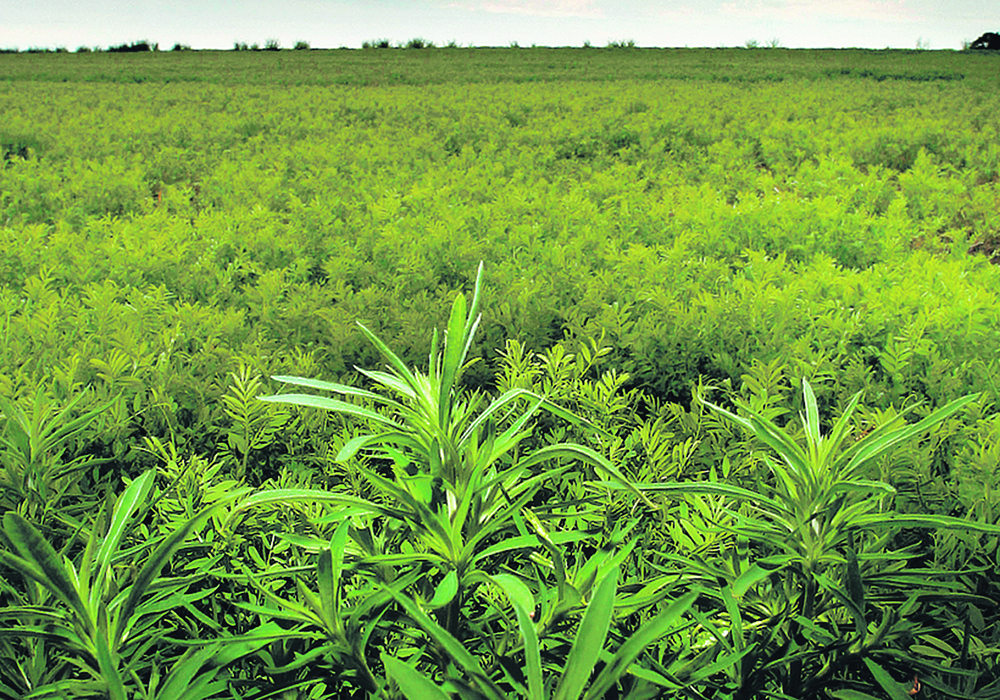The prolific weed has been found across the Prairies with resistance to Group 2, Group 9 and now Group 4 herbicides
Producers looking for good news out of the latest Alberta survey of kochia resistance on the Prairies are going to be disappointed.
The stubborn weed continues to show how tough it is against any herbicide.
Group 2 herbicide-resistant kochia first showed up on the Prairies in 1988 and has since become so widespread that all populations are assumed not to be susceptible.
“Group 2 resistance showed us just how quickly a herbicide-resistant trait can spread throughout kochia populations in the prairie provinces,” said Charles Geddes, a research scientist at Agriculture Canada specializing in weed ecology. “It took only about two decades to go from the first confirmation to essentially all populations being Group 2 resistant.”
Read Also

Stacking Canada up on gene editing livestock
Canada may want to gauge how Argentina and other countries have approached gene editing in livestock and what that has meant for local innovation.
That trend continued in 2011 when the first Group 9 glyphosate-resistant kochia was found in southern Alberta, which by 2017 was found to be the case in half the population.
That year also saw the emergence of Group 4 dicamba resistance, and populations with triple resistance to Group 2, 4 and 9.
Since then, the numbers have continued to rise across the Prairies during the survey, which alternates between Alberta, Manitoba and Saskatchewan.
The results of the 2021 survey included the discovery of fluroxypyr resistance.
“It’s pretty surprising to see how this is even possible,” said Geddes of the speed of herbicide resistance in the kochia populations.
The dry conditions on the Prairies in recent years have seen kochia populations thrive, spreading their scourge as tumbleweeds blowing across the plains.
Additionally, Geddes said kochia pollen is also a source for herbicide resistance due to the plant’s unique flowering.
“The female part of the flower matures before the male part of the flower so it is actually receptive to pollen from neighbouring plants before it can self-pollenate,” said Geddes.
That, combined with the weed’s ability for long-distance seed dispersal, is now equating to a plant with the seeming ability to cancel just about anything that’s thrown at it and a perfect recipe for herbicide resistance.
“With 78 percent of the population having glyphosate resistance, we’re at the point where it’s pretty safe to assume if you are dealing with kochia, it’s quite likely glyphosate resistant kochia,” said Geddes.
Triple resistance for glyphosate, dicamba and fluroxypyr was found in 10 percent of the kochia tested during the 2021 survey in Alberta.
“It’s safe to assume that those populations are also Group 2 resistant,” said Geddes.
With herbicide options becoming exhausted, Geddes said there isn’t any single tool available to deal with kochia, “and it is unlikely there will be one in the near future.”
Alternative kochia management techniques will be needed, “as you’re not going to be able to spray your way out of resistance,” he added.
Herbicides are still going to be part of management but will continue to be challenged in their effectiveness unless non-chemical techniques are also incorporated.
Kochia for cattle feed is one option if cut before the weed produces seed.
Other options being researched include ways to exploit the weed’s weak point — that it’s seed isn’t viable in the soil beyond one or two years.
“Kochia tends to respond to crop competition,” said Geddes. “The way it responds is it reduces its biomass, reduces its seed production so anything you can do to promote competitive crops is going to go a long way to helping to prevent that kochia seed production.”
Geddes said research into crop row spacing and seeding rates have shown some promise.
“Both decreasing row spacing and increasing seeding rates were effective strategies,” said Geddes. “But when you combine those two together, we actually saw an 80 percent reduction overall in kochia biomass.”
That reduction rate is on par with control rates of herbicides but it doesn’t come without a cost.
“Some of these cultural tools can be as effective as a new herbicide mode of action,” he said. “It’s an investment of equipment and also an investment in increasing crop seeding rates.”
Geddes said while some of the herbicide resistance in kochia is relatively low in populations, the trend has shown it will increase the more the weed is exposed to chemical treatments.
















